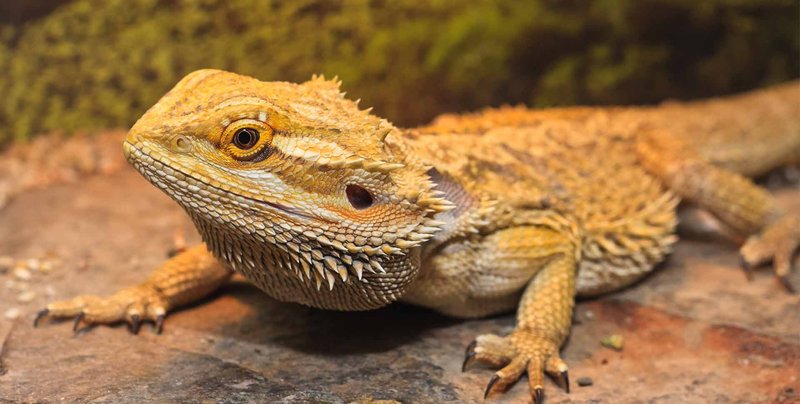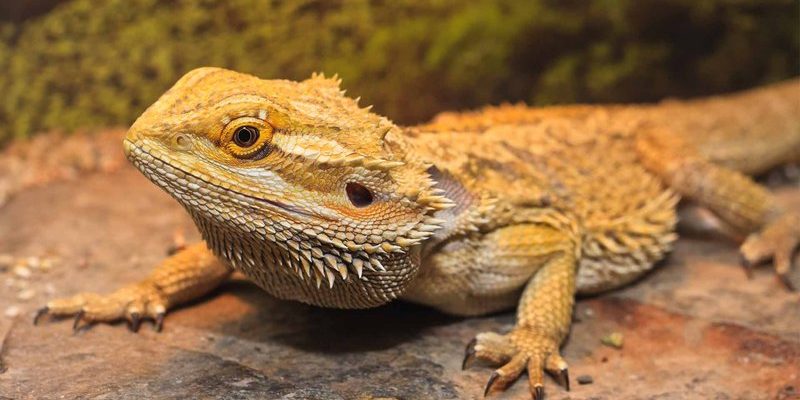
Let’s dive into the past and explore how these reptiles evolved. Just like how a tree branches out into different paths over time, the evolutionary history of the bearded dragon is marked by various changes and adaptations. From their ancient ancestors to the modern-day pets we know and love, there’s a rich tapestry of history waiting to be uncovered. Ready? Here’s the scoop on the evolutionary journey of the charming bearded dragon.
What Are Bearded Dragons?
Bearded dragons are part of the Pogona genus, a group of reptiles native to Australia. With a sturdy body, a triangular head, and a distinctive beard that can puff up into a spiky collar, they’re quite the sight! There are several species of bearded dragons, but the most common one kept as a pet is the Pogona vitticeps. These lizards typically grow to about 18 to 24 inches long and can live for up to 10 years in captivity, making them a long-term companion.
Interestingly, their physical features are more than just for show. The bearded dragon’s beard serves multiple purposes, from displaying aggression to regulating body temperature. When they inflate their beard, it’s a way to ward off potential threats. So, while they’re adorable, they also carry centuries of evolutionary traits that help them survive in the wild.
Where Did They Come From?
The bearded dragon lineage can be traced back millions of years. They share a common ancestor with other reptiles, originating from the arid and semi-arid regions of Australia. This habitat has influenced their evolution significantly. Over time, they adapted to thrive in harsh environments, developing traits that help them conserve water and regulate temperature effectively.
One fascinating aspect of their history is how they were once part of a more extensive group of reptiles that roamed the Earth. The Pogona genus is believed to have split from its relatives roughly 20 million years ago. This shift allowed bearded dragons to evolve into the unique creatures we see today, alongside other lizards and iguanas.
Key Adaptations and Evolutionary Traits
Bearded dragons have undergone several adaptations to help them survive in their native habitats. One of the most notable adaptations is their color-changing ability. Depending on their environment and mood, they can shift from a light tan to darker shades, which helps with camouflage against predators. This color-changing skill serves as a survival mechanism in the wild, allowing them to blend seamlessly into their surroundings.
Additionally, their diet has evolved, allowing them to be omnivorous. In the wild, bearded dragons eat a mix of insects, plants, and even small mammals. This versatility in diet helps them thrive in varying conditions and ensures they get the nutrients needed to grow strong.
The Role of Bearded Dragons in Ecosystems
In the ecosystems they inhabit, bearded dragons play a vital role. They contribute to controlling insect populations by feeding on crickets and other bugs, protecting plant life in the process. Their eating habits help to maintain ecological balance, showcasing how even small creatures can have significant impacts on their environment.
Moreover, they serve as prey for larger predators, forming an essential link in the food chain. Their evolution has equipped them with traits that not only help them survive but also allow them to contribute to the broader ecosystem in Australia’s arid landscapes.
The Domestication of Bearded Dragons
Over the past few decades, bearded dragons have transitioned from wild reptiles to beloved pets. This domestication process began when collectors recognized their gentle nature and striking appearance. As breeders started to selectively breed for specific traits—such as color variations or size—bearded dragons became more accessible to the general public.
The shift toward domestication has also led to changes in their behavior. Pet bearded dragons tend to be more docile and friendly compared to their wild counterparts, making them ideal for families and first-time reptile owners. Their adaptability to captivity and willingness to bond with humans highlights the success of this evolutionary journey.
The Future of Bearded Dragons
As we look ahead, the future of bearded dragons, particularly in captivity, is promising but requires responsibility. The popularity of these reptiles has led to increased breeding, which can have its pitfalls. There’s a risk of overbreeding and health issues if proper care isn’t taken. Ensuring that both wild and captive populations are protected will be essential moving forward.
It’s also important to promote awareness about their biological needs. As their popularity grows, educating new owners about habitat requirements, diet, and general care will help maintain healthy bearded dragon populations. The evolution of these fascinating reptiles continues, and it’s up to us to respect and nurture their legacy.
Exploring the evolutionary history of the bearded dragon reveals a captivating journey marked by adaptations, survival, and domestication. From their ancient ancestors roaming the Australian landscape to becoming one of the most popular pet reptiles today, bearded dragons showcase the beauty of evolution.
As pet owners, understanding this history enriches our bond with these creatures. We gain a deeper appreciation for their natural behaviors, needs, and contributions to ecosystems. Whether you’re a current owner or just a curious observer, recognizing the evolutionary journey of the bearded dragon helps us honor these remarkable lizards and ensures their future remains bright. So, the next time you see a bearded dragon, you can admire not just its unique traits but also the incredible story behind its existence.

